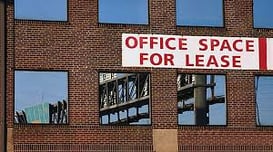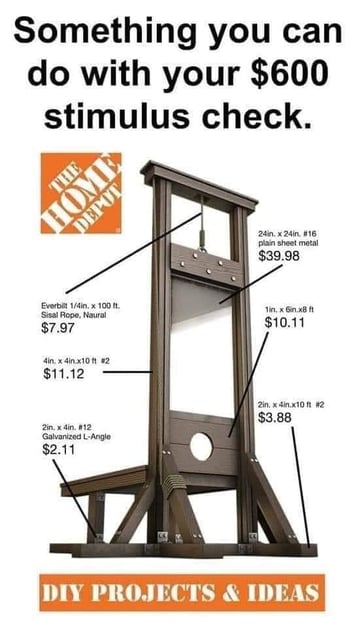 Let's suppose you're a commercial loan broker, and you are trying to get a loan on an office building that is 12% vacant. Let's further suppose that office space in the entire city is, on average, 11% to 13% vacant.
Let's suppose you're a commercial loan broker, and you are trying to get a loan on an office building that is 12% vacant. Let's further suppose that office space in the entire city is, on average, 11% to 13% vacant.
When you are a preparing the Pro Forma Operating Statement, should you therefore use 12% as the Reserve for Vacancy and Collection Loss? The answer is no. You should always use a 5% Reserve for Vacancy and Collection Loss, no matter the actual vacancy rate for the city.

Why? Because you can. Remember, the commercial loan broker who gets his client the largest loan - the most leverage - almost always is the one who gets to close the deal and earn a nice fee.
But why aren't commercial real estate lenders using a 12% reserve for vacancies? Perhaps the simplest reason is because you have doing it for decades. Commercial real estate loan officers are also used to seeing appraisers, commercial brokers (realty sales brokers), and commercial mortgage brokers use a 5% reserve for vacancy.
If you were to try to be "more honest" and use, say, 8%, the lender might say to himself, "Hmmm, I was going to use 5% in my pro forma operating statement; but perhaps I will use 8% instead." That can't be good for your client or you.

If a competing commercial loan broker used 5% in his operating statement, and you used 8%, guess which one of you would get the largest loan approved and would earn the loan fee, win the pretty girl, and ride off with her into sunset?
Okay, but why has a 5% Reserve for Vacancy and Collection Loss become the standard in the industry? Part of the reason has to do appraisal theory. I makes no sense for an office building owner to have vacancies. In theory, he should just lower his rent until he fills his building. The 5% reserve should really be designed to cover just the turnovers - that period when a tenant moves out and until a new tenant can be found.
In real life, however, there are practical reasons why an office building owner might learn to live with 10% to 20% in vacant space. For one thing, tenants beat up buildings. There is wear and tear on the lobby, the elevator, and the hallways.

Secondly, the landlord often has to pay for utilities. The more tenants, the higher his utility bill. If the rent has to be fairly low to fill the building, the landlord may not be gaining very much.
Another issue is that it costs the landlord money to fill his building. There are tenant improvements that must be paid for, as well as large leasing commissions that must be paid. These are also know as TI/LC's. While "appraisal theory" might say that it is economic stupidity to leave space vacant, sometimes the landlord simply doesn't have the money to lease his unused space.
Leasing can also be very cyclical. As an economy comes out of a recession, leasing activity can be brisk; but during the depths of a recession, the space will likely remain vacant, even if the landlord lowers the rent by 50%. In the words of economists, the demand is inelastic.

In economics, inelastic demand occurs when the demand for a product doesn't change as much as the price. For example, if the price increases 20%, but the demand only goes down by 1%, the demand for that product is said to be inelastic. In the case of leasing office space during a recession, you could lower your asking rent by 50% and not even lease 1% more space.
And how are your existing tenants going to feel about you lowering the rent on space, identical to their's, by 50%? There will be resentment and demands to renegotiate existing lease. Lots of unpleasantness.
What should you do with any vacant space on your Pro Forma Operating Statement? Answer: You should show the market rent of any vacant space! It may not be precisely in line with appraisal theory, but lenders will usually let you get away with it.

Facebook Portal:
Do you guys remember that Facebook commercial where a lovely young woman is rushing to make dinner for a very special new boyfriend, and she burns it. In a panic, she calls her kind and patient father on her Facebook Portal, and he calmly coaches her through making a nice pasta dish. She finishes just as the doorbell rings, and the day is saved.
Well, my dear son, George IV, lives in California, with his fiancee, while his wonderful brother, Tom, and his lovely sister, Jordan, live here in Indiana, near Cisca and me. Well, our entire family used our Facebook Portals to spend two hours together during Christmas. It was a delightful experience.
I have to say that the Facebook Portal is one of the most wonderful devices ever invented. It automatically follows the speaker around, and the picture quality is crystal clear. What a terrific way to spend time with your loved one. As head of one of the major tech companies, Mark Zuckerberg gets bashed around; but he and his engineers did a helluva good thing when they absolutely perfected these portals.

















